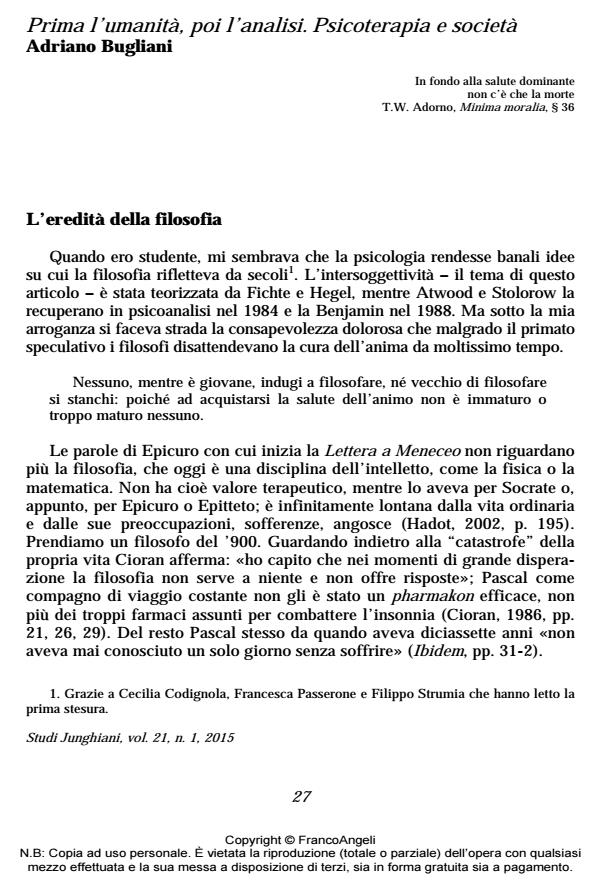Prima l’umanità, poi l’analisi. Psicoterapia e società
Titolo Rivista STUDI JUNGHIANI
Autori/Curatori Adriano Bugliani
Anno di pubblicazione 2015 Fascicolo 2015/41
Lingua Italiano Numero pagine 20 P. 27-46 Dimensione file 172 KB
DOI 10.3280/JUN2015-041004
Il DOI è il codice a barre della proprietà intellettuale: per saperne di più
clicca qui
Qui sotto puoi vedere in anteprima la prima pagina di questo articolo.
Se questo articolo ti interessa, lo puoi acquistare (e scaricare in formato pdf) seguendo le facili indicazioni per acquistare il download credit. Acquista Download Credits per scaricare questo Articolo in formato PDF

FrancoAngeli è membro della Publishers International Linking Association, Inc (PILA)associazione indipendente e non profit per facilitare (attraverso i servizi tecnologici implementati da CrossRef.org) l’accesso degli studiosi ai contenuti digitali nelle pubblicazioni professionali e scientifiche
L’articolo s’inserisce in un dibattito lungo un secolo: psicoanalisi o psicoterapia? E sostiene la possibilità e la necessità per gli analisti di lavorare sia in profondità che in superficie. Ovvero di praticare analisi e psicoterapia insieme, piuttosto che concepirle come due modalità separate e antitetiche.
Parole chiave:Intersoggettività, psicoterapia, self-disclosure, analisi del profondo, adattamento sociale, filosofia
Adriano Bugliani, Prima l’umanità, poi l’analisi. Psicoterapia e società in "STUDI JUNGHIANI" 41/2015, pp 27-46, DOI: 10.3280/JUN2015-041004